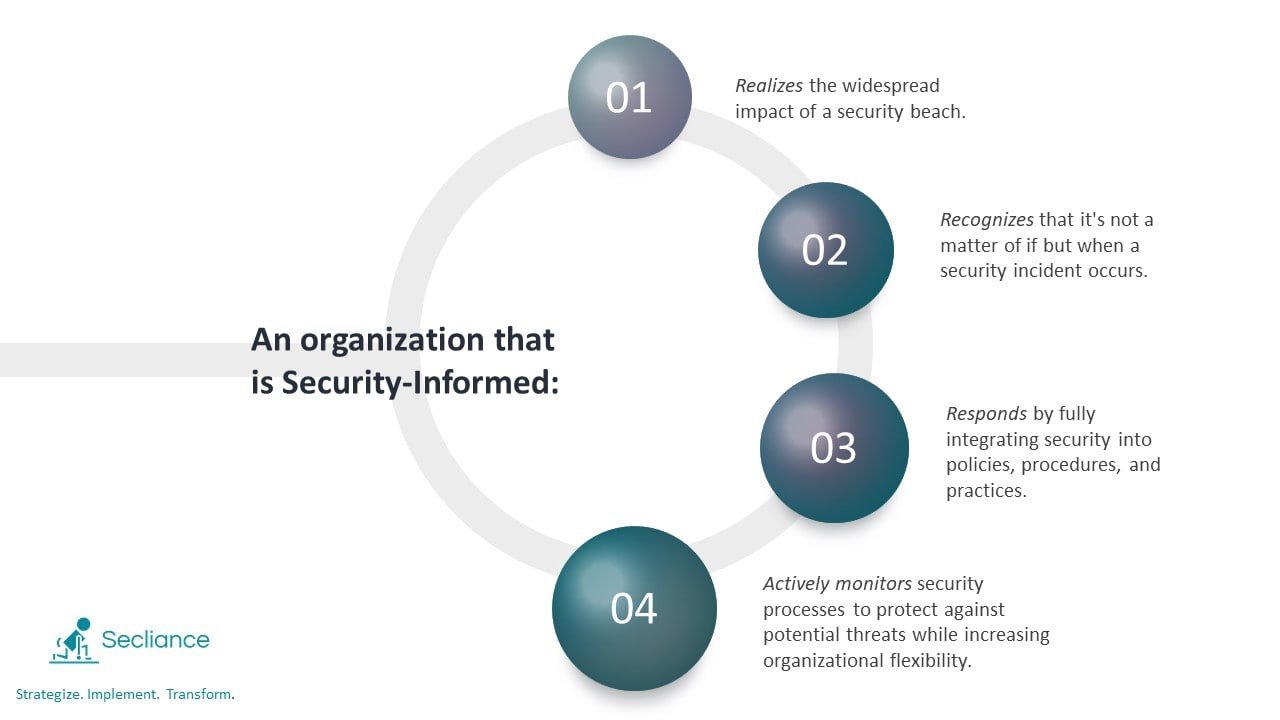4 Underrated Strategies of a Security-Informed Organization
With security breaches happening every day, Information Security is more crucial, relevant, and important for the survival and growth of your organization. As such, it is vital that your entire organization is security-informed. An organization that is security-informed:
Realizes the widespread impact of a security beach.
Unfortunately, most company executives and boards still do not understand the widespread impact of security breaches or are not sure what to about what to do so they choose to do nothing. Security breaches could lead to reputational damage, financial losses, data loss, fines and fees, and lots of intangible costs such as operation disruption and employee trust.
Recognizes that it's not a matter of IF but WHEN a security breach occurs.
Cybersecurity threats are increasing. Cyber criminals are taking advantage of the fact that we are more connected than ever before.
Responds by fully integrating security into policies, procedures, and practices.
Most organizations react to Fear, Uncertainty, and Doubt (FUD) when determining how to respond to the latest security news. In all cases, having a solid foundation yields a better response strategy. This includes;
Enforceable policies that clearly communicate acceptable and unacceptable behavior
Procedures that define who, what, where, when, and how
Security practices and controls such as firewalls, anti-virus software, encryption, two-step authentication, alerts, monitoring, patch management, and disaster recovery your sensitive information
Actively monitors security processes to protect against potential threats while increasing organizational flexibility.
A good continuous monitoring program provides visibility into which practices are working and which need to be enhanced. This should feed into the risk management program to ensure that resources are appropriately allocated for maximum benefit. Never be satisfied with your security posture.
Looking forward
To build security-informed culture, organizations should:
Take a step back and evaluate the big picture. Which security framework and strategies will work for your organization given your unique;
o Data sensitivity (i.e., customer data, PHI, PII, PCI, etc.),
o Business processes,
o Regulatory requirements,
o Technical capabilities and resources,
o Human capabilities and resources, and
o Threats and vulnerabilities?
Watch out for blind spots. These include; denying facts about the maturity level of your security program, lack of accountability, and an organizational culture that doesn’t embrace information security. Remember, absence of a breach doesn’t mean security measures are in place.
We're here to help
If you have any questions about building a security-informed approach and security benchmarking services, email us at support@secliance.com. We have extensive expertise and experience implementing HITRUST, FISMA, FedRAMP, PCI, and NIST frameworks. Let us help you build a flexible, scalable security strategy.

